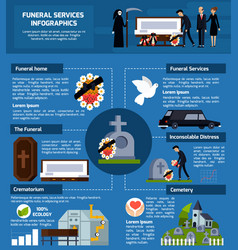The Evolution Of Church Music - From Gregorian Chants To Contemporary Worship

Material Author-Kidd Bragg
The history of church music is firmly linked to the history of faith. Until the high Center Ages, the only type of songs that was considered spiritual was monophonic incantation.
Unison shouting was the major tradition up until musicians started to try out polyphony-- music in which greater than one part is sung at the same time. This development was not without debate.
Gregorian Chants
Gregorian incantations are the structure of Christian liturgical songs. Often, the same melody is repeated for different texts throughout a solution and also can be made use of to highlight the text's magical as well as spiritual message. Numerous Gregorian tunes are similar to Hebrew synagogue tunes. A couple of Gregorian melodies have come to be prominent secular songs, including the Renaissance song "Religious woman bitten wir den heiligen Geist."
Gregorian incantations are monophonic, and they do not make use of harmony, yet they do use drones, a musical method in which one note is held for an extensive time period. They also do not have specific rhythms, however they do include a ternary type and also often include an incipit (beginning) as well as cadences (finishing). Gregorian chants were established at the time of the Frankish kings' attempt to unify their kingdom under a solitary Roman liturgy as well as chant. One of the most renowned Gregorian chants are the Responsorial psalms and the Antiphons. These are accompanied by cost-free melodies called tropes that show the text's significance.
Hymns
The verses of a hymn need to be poetic, with a clear, rational development leading to a solid, definitive orgasm. They will not stray into additional throughts for a rhyme or rhythm. The songs of a hymn need to recognize, to make sure that they can be conveniently found out and also sung.
A timeless hymn has a strophic kind, with a number of short verses sung to the same melody. This allows for congregational vocal singing as well as assists to offer the narrative arc of the song. Traditional hymns have a refrain, although there are some without one.
In the 16th century, Renaissance polyphony eclipsed Gregorian shout for a while, McDonnell states. But with liturgical reforms following in the 20th century, Gregorian incantation was recovered, Black includes.
Gospel Tracks
Gregorian incantation as well as other Western church songs are rooted in ancient times when people automatically burglarized song to share their feelings. This technique can be seen in biblical accounts of events such as the tune of celebration led by Miriam following a divine miracle when she parted the Red Sea, and also the spontaneous ode pneumatikos sung by Mary after becoming pregnant with Jesus.
Throughout the 2nd Great Awakening in the 1800s, Protestant denominations started to proliferate and also much of them made use of songs to connect their theology. Charles Wesley and also Isaac Watts created hymns that were incredibly popular, and also African American servants developed a style of songs called spirituals.
These African American religious songs included aspects of people and also blues songs, however they additionally kept a deep spiritual pathos. When they merged with black church music that arose from the Virtuousness movement, which stressed personal devotion, scripture tracks were born. https://evangelicalfocus.com/feature/10601/prolegomena-to-church-history-understanding-greco-roman-philosophy-religion-and-worldview tended to have a refrain and were normally at a much faster speed than hymns.
Contemporary Worship
When it pertains to contemporary prayer, every church does things a little bit differently. While many churches make use of a range of designs, many are rooted in contemporary types of music with a strong impact from popular culture.
These styles are frequently based upon tools like acoustic guitars as well as basic choruses. They are made to equalize congregational singing so even more individuals can take part. The style has actually developed from the people guitars of the 1970s to more acoustic string as well as woodwind instrumentation.
Yet while the pounding kick-drums of the latest Mumford as well as Sons song might seem a lot more harmonic with contemporary culture, there are various other designs that can be more theologically focused and also musically innovative. For example, hymns with a distinctly theological lyrical emphasis mixing standard rhythms as well as instruments have actually started to arise over the last few years. The trend is encouraging and also one that can at some point bring Gregorian incantations back into the mainstream of modern praise. The important point is not to develop a duality in between design and also material.

